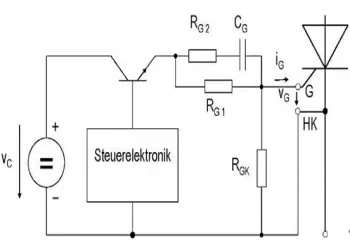In 2023, the China Greater Bay Area Concrete Industry High-Quality Development Seminar, as well as an Expo on Concrete Equipment and Technology, will be held at Guangzhou Canton Fair Complex under the motto “Gather Talents, Unlock Power, Discuss Smart Concrete.” The event is co-hosted by the Guangzhou Concrete Industry Association and Guangdong Hongwei International Exhibition; responsible officials from the Guangzhou Municipal Bureau of Urban and Rural Development Municipal Bulk Cement and Building Energy Conservation Management Center as well as Concrete Industry Experts as well as representatives from downstream and upstream companies were present at the event.
Fengshan Reservoir Project in Qiannan Buyi and Miao Autonomous Prefecture in Guizhou Province was able to extract 200 millimeters of a core sample which measured 25.3 meters from the RCC gravity dam located in Guizhou Province, China. The core sample was an extremely long conservation project in Guizhou Province, thus attesting to the superior technology used in construction.
The concrete pouring process for the first storage facility in Qishi Junction of China’s Pinglu Canal is underway and is a step towards the building of the main structure. When it’s completed and ready for travelers, the canal will become one of the most narrow, cost-effective, and efficient ocean channels connecting Guangxi to Southwest China.
1. What is a polycarboxylate-based superplasticizer?

Polycarboxylate superplasticizer can be found for cement as a dispersant. Made up of polymers that contain both the sulfonic acid group (-SO3H) as well as carboxyl group (-COOH) or their derivatives, Polycarboxylate superplasticizer has proven its effectiveness in environmental protection as well as security characteristics.
The primary function of polycarboxylate superplasticizers is to distribute cement pieces more effectively by adhering to concrete surfaces, reducing the need for water while also enhancing and extending concrete’s toughness and flexibility. Polycarboxylates boast more efficient water reduction rates as well as the ability to work compared with traditional water-based water-reducing agents. They are also substantially improving the efficiency and durability of concrete.
2. Superplasticizers convert polycarboxylate into superplasticizers.
Polycarboxylate superplasticizer is commonly employed in cement concrete to disperse. It is also extensively used on bridges, highways, tunnels and highways dams, high-rise constructions, and other engineering fields. The superplasticizer polycarboxylate is commonly employed in grouting operations for anchor purposes and pouring material like anchor plugging, waterproof mortar self-leveling K11 cement mortar self-leveling, waterproof mortar self-leveling waterproof self-leveling mortar K11 cement self-leveling waterproof anchoring plugs for waterproof anchoring K11 cement self-leveling, waterproof mortar that self-levels, waterproof plugging K11 cement self-leveling watertight cement mortar self-leveling self-leveling components made of special mortars and various construction materials. The specific applications of these materials are described below.
1. Highway Engineering
When it comes to highway engineering, superplasticizers made of polycarboxylate are commonly used to create high-performance road concrete, which improves the durability of roads and reduces wear. Their capacity to reduce water significantly decreases the consumption of water during concrete production while also increasing strength and flexibility. They also increase densification, toughness, smoothness, and density of roads’ surfaces – which meet the green, safety, and endurance needs in highway infrastructure projects.
2. Bridge Engineering
In the design of bridges, superplasticizers based on polycarboxylate may help create concrete that is stronger and has more fluidity to improve the capacity for bearing and the longevity of bridges. Their capacity to reduce water and workability greatly enhances the performance of bridge concrete by uniformizing the compactness of concrete mixes and decreasing the likelihood of cracks, thereby prolonging their lifespan while also increasing the safety of these essential infrastructure assets.
3. Dam Project
In dam design, polycarboxylate-based superplasticizers are often utilized to produce high-strength and high-impermeability dam cement to improve the stability and security of dams. Dams serve a crucial function in storing water resources as well as controlling flow. Furthermore, their structural integrity demands strict requirements regarding stability and security requirements for their design – using polycarboxylate superplasticizers will increase resistance/impermeability ratio and stop cracks/leakage, effectively increasing the stability/security of concrete dams, thus contributing to their design/construction.
4. Tunnel Engineering
Tunnel engineering is a subject in which superplasticizers composed of polycarboxylate can be used to make impermeability and high-strength tunnel concrete, which increases the endurance and strength of tunnels for transportation use. With the stringent requirements on their stability and durability, Superplasticizers made of polycarboxylate can increase strength and durability while also sealing leaks or cracks to increase tunnel strength and stability.
5. High-Rise Buildings
For high-rise buildings, superplasticizers made of polycarboxylate are employed to make extremely fluid, high-strength concrete that enhances security and structural stability. Because of the sheer number of floors and the high-rise structures that are high in height, the requirements for the strength of the structure and the building’s seismic performance are extremely stringent. Polycarboxylate superplasticizers are able to significantly increase the flexibility and strength of high-rise concrete. Moreover, increasing the earthquake resistance and security of structures made with superplasticizers made of polycarboxylate will also improve security and strength, as well as increase stability and security dramatically.
6. Materials such as grouting, anchoring, pouring, and plugging are just a few of the areas.
Superplasticizers made of polycarboxylate have proved to be valuable tools in engineering disciplines like bridges, dams, road tunnels, and high-rise structures. However, their application also covers construction materials such as grouting and pouring substances, as well as anchoring and plugging purposes. Their main purpose in these areas is to adhere to cement surfaces more evenly, which helps reduce the use of water while increasing the consistency and quality of the materials. They can also meet a variety of requirements for maintenance and construction simultaneously.
3. How do I go about to make superplasticizers made of polycarboxylate?
Superplasticizers made of polycarboxylate are an essential ingredient in cement concrete. It acts as a dispersant as well as an agent for binding. To make it, you must follow these steps:
Synthetic Macromonomers
The first step is that synthesized macromonomers need to be created. This is one of the main components when it comes to making superplasticizers using polycarboxylate. Macromonomer is the principal component of the superplasticizer polycarboxylate, which includes polymer chains as well as Polar groups that provide better bonding to cement particles, being superplasticizers. The process of free radical polymerization has become the favored method. Most raw materials consist of unsaturated acids, such as acrylic, methacrylic, and maleic acids, as well as polypropylene and glycol polymers as raw material. When synthesizing macromonomers, it’s essential to be careful about controlling temperatures, times, and proportions in addition to other factors to make superior quality and high-yield macromonomers.
After the synthesis of macromonomer, Polymerization reactions are required. Polymerization reactions utilize an oxidizing agent, such as ammonium persulfate, in order to boost the levels of polymerization in the macromonomer synthesizing procedure. In this process, it’s crucial that parameters such as the temperature of the reaction and the quantity of oxidant that is used are monitored closely to ensure the efficiency as well as the quality of the product during this stage of the procedure.
Post-processing After the polymerization reaction is completed, post-treatment takes place. This includes dissolving polymer and water according to certain ratios, then adding acidic substances to neutralize pH, altering the pH of the solution as necessary, and adding protective colloid if needed and other ingredients to create the final superplasticizer comprised of polycarboxylates. It is crucial to regulate the quantity of solution and pH value, as well as the kind and quantity of protective colloid used, as well as other parameters to ensure the quality and efficiency of the final superplasticizer comprised of polycarboxylate resins. To ensure the effectiveness and quality of the final product.
4. Market Prospect Analysis of Superplasticizer Polycarboxylate
Rapid growth in construction means a rise in the demand for superplasticizers made of polycarboxylate; consequently, their potential is huge. In this article, we’ll look at their market opportunities by analyzing factors such as the demand for products, technology advancements, the policy environment, competitive patterns, and the latest trends.
1. Market Demand
With the rapid growth of urbanization and construction projects for infrastructure happening all over the world, cement concrete demands have steadily increased every year, resulting in a demand for superplasticizers made of polycarboxylate. Superplasticizers made of polycarboxylate can provide a variety of benefits, including outstanding water-reducing capability, a greater working capacity, and lower shrinkage rates. In addition, it will dramatically improve the performance of concrete and its durability. Superplasticizers made of polycarboxylate are used extensively in engineering fields like roads, bridges, tunnels, dams, and high-rise structures. Millions of users depend upon these superplasticizers. Their usage will continue to increase every year because of advances in infrastructure development as well as the improvement in the quality of buildings, which will result in a greater demand for polycarboxylate superplasticizers with time.
2. Policy Environment
Since the pandemic spread all over the world, a variety of policies to boost and enhance the industry of construction have been put into the market and have been recognized as a key driver of economic growth. One of these outlines is the Chinese “Outline for Modernizing Construction Industry,” in which it was stated that by 2030 date when the construction industry size could increase to 20% of GDP. China has tightened its standards on environmental protection and energy conservation, creating an incentive for policymakers to develop polycarboxylate-based superplasticizers. There are also policies in place across China to encourage the production and use of these substances – growing demand for superplasticizers that are made from this chemical.
3. Innovation and creation in technology.
Superplasticizer manufacturing technology and performance have adapted with advances in technology, with polycarboxylate producers across the globe conducting research into technological development and innovating by creating a variety of new superplasticizers that are made from polycarboxylate with enhanced water-reducing models, higher yield capacities for slump retention, as well as features that have low shrinkage. Through expanding the applications and market space for their superplasticizers.
4. Competitive Landscape
The market for superplasticizers made of polycarboxylate has grown extremely competitive in recent years. Many well-known construction materials firms from abroad have begun to incorporate polycarboxylate superplasticizers as an element of their products, and smaller firms are also entering the market. They are causing a rise in competition among businesses that strive to provide top products while reducing manufacturing costs to increase market share.
5. Trends
Due to the continual growth in building construction industries, new trends will soon emerge for superplasticizers made out of polycarboxylate.
High Performance When it comes to meeting the requirements of engineering, superplasticizers made of polycarboxylate are constantly improved to meet the demands of high-performance concrete.
Environmental Protection: With the increasing demands for environmental protection and demands for energy efficiency, Polycarboxylate superplasticizers need to become more sustainable and efficient in energy use.
Customization Many industries and concrete fields rely on custom-made polycarboxylate superplasticizers to make sure that consumers are comfortable with them.
Intelligent: As we advance in technology for information and intelligence, polycarboxylate superplasticizers will shortly become more sophisticated and capable of automated production and intelligent usage.
Superplasticizers made from polycarboxylate hold huge market potential. Businesses must strive to constantly improve the quality of product and service to meet changing market demands and change when they are required. In addition, ongoing technological research and innovations and advances are essential to making sure that they meet market demands and anticipate future trends in growth.





